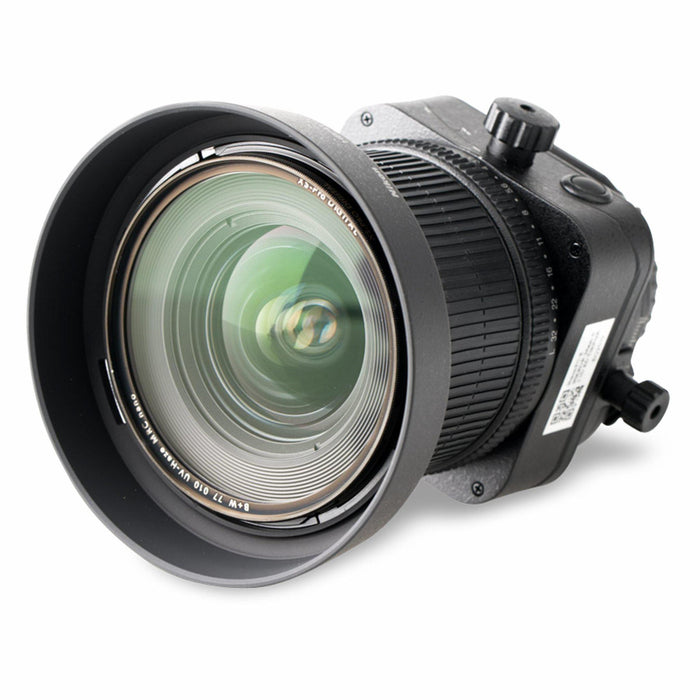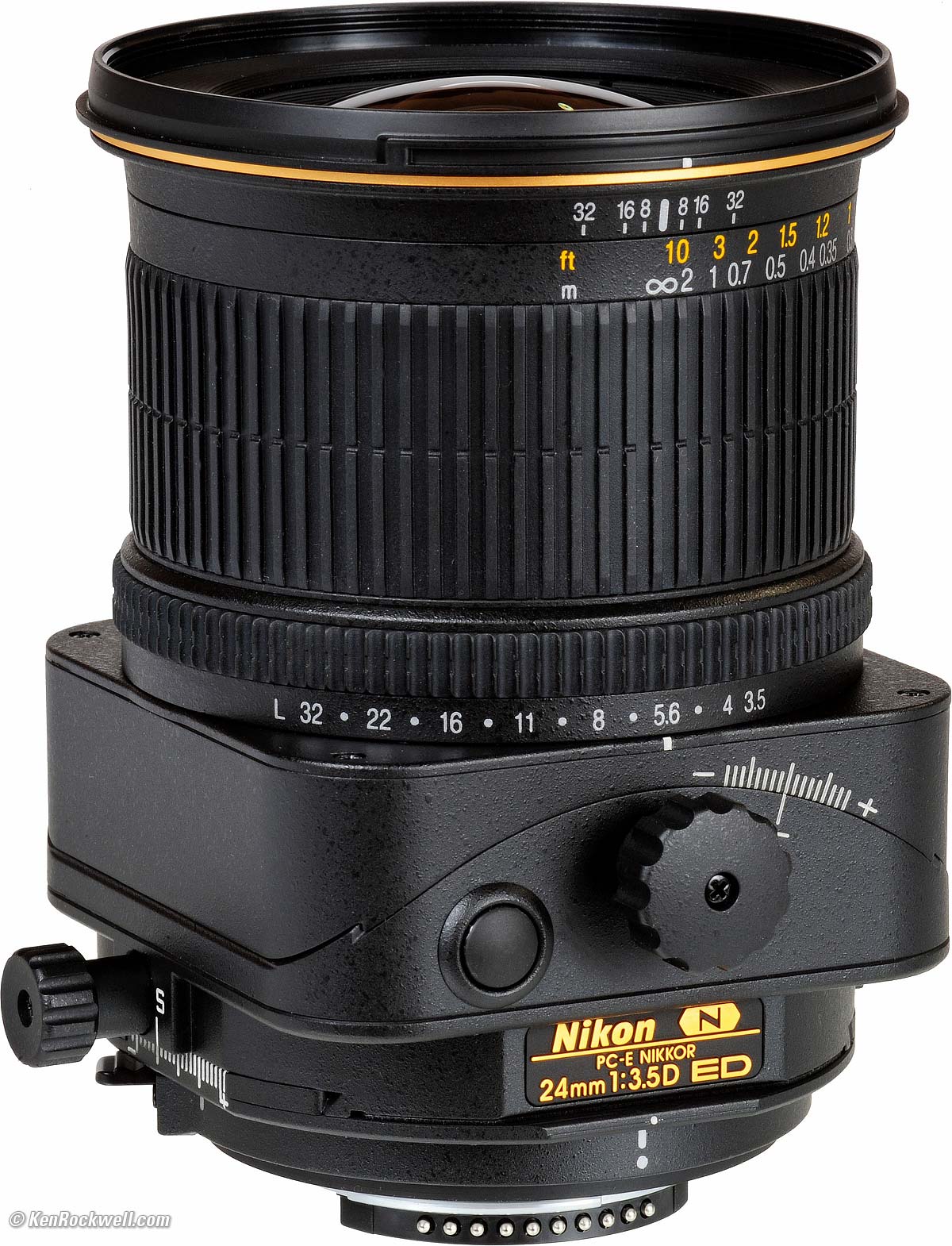

Our Analyzer software had a particularly difficult time figuring out light falloff when the lens was shifted we really only have accurate results for the default non-shifted, non-tilted position. The lenses fare slightly better when used wide open at ƒ/3.5, getting to the worst of it by ƒ/8. CA seems to be acceptably low on average - only popping up in the corners. Shifted, the lens produces substantial chromatic aberration on the D3, but the CA reduction kicks into overdrive and ensures aberrations are kept to a minimum. Looking at the RAW images processed through Bibble, we can see the D3 is definitely earning its keep to reduce the CA present in the image. CA is good wide open at ƒ/3.5, is at its worst around ƒ/11 (at around 5/100ths of a percent of frame height), but gets better as the lens is stopped down towards ƒ/32. Average CA is still virtually non-existent, meaning you're just going to see aberration in the corners, if at all. On the full-frame D3, chromatic aberration is slightly prominent, even with CA reduction inherent in the camera. At ƒ/32, we see between 3 and 4 blur units.īecause the D3 applies chromatic aberration correction to in-camera JPEG images, we also shoot RAW and process those images through Bibble with minimal corrections to give a more ''accurate'' picture of how a lens is performing. Diffraction limiting again sets in at ƒ/11, with a small drop in sharpness, but even at ƒ/22 the lens doesn't exceed 2 blur units. Sharpness improves dramatically at ƒ/5.6, and is almost tack-sharp at ƒ/8. When used wide open at ƒ/3.5, ''central sharpness'' - or what would be central if the lens wasn't shifted - is still very good, at 1 blur unit, with the corners on the shifted side rising up to about four blur units. On the full-frame D3, the lens seems to be capable of producing extremely sharp images on this platform. There is some definite corner softness in the shifted corner. At ƒ/32, it's just over 3.īut using this lens without shifting or tilting would be like buying a Ferrari to use as a commuter car. Diffraction limiting seems to set in after this point, losing accuity as the lens is stopped down, but still under 2 blur units by ƒ/22. The results of the lens on the full-frame D3 shows a performance reminiscent of regular prime lenses sharp, to be sure, when used wide open at ƒ/3.5, but with increasing sharpness as you stop down and hitting an optimal setting of ƒ/5.6.

With the lens in its default position, it's pretty obvious to see that it's very, very sharp. We did, however, get data by shifting the lens to the left and right ends of the spectrum. In the end, try as we might, we could not get data for a tilted image. Our plans were foiled in various ways - mainly, it was just that Analyzer refused to analyze some of the images we attempted to feed it. Our original intention was to shoot the lens in its various shifted and tilted positions and see if there was a substantial degradation in quality. For most of the time, we feed fairly easy images into Analyzer sometimes however, we create images of those charts on which Analyzer will choke.

Our testing software, DxO Analyzer, works by analyzing JPEG images of a test chart shot with a given lens. In short, it wasn't an easy lens to test. However, before we examine the sharpness of the lens we need to devote a paragraph or two to our testing methodology with this lens. The 24mm ƒ/3.5 PC-E is a very sharp lens, but for $2,000, you'd expect it to be.
NIKON 24MM TILTSHIFT UPDATE
Update (February 2, 2009): We've removed the DX(D200) data. The 24mm ƒ/3.5 PC-E comes standard with a bayonet-mounted bowl-shaped lens hood, a lens pouch, and a price tag just shy of $2,000.


 0 kommentar(er)
0 kommentar(er)
